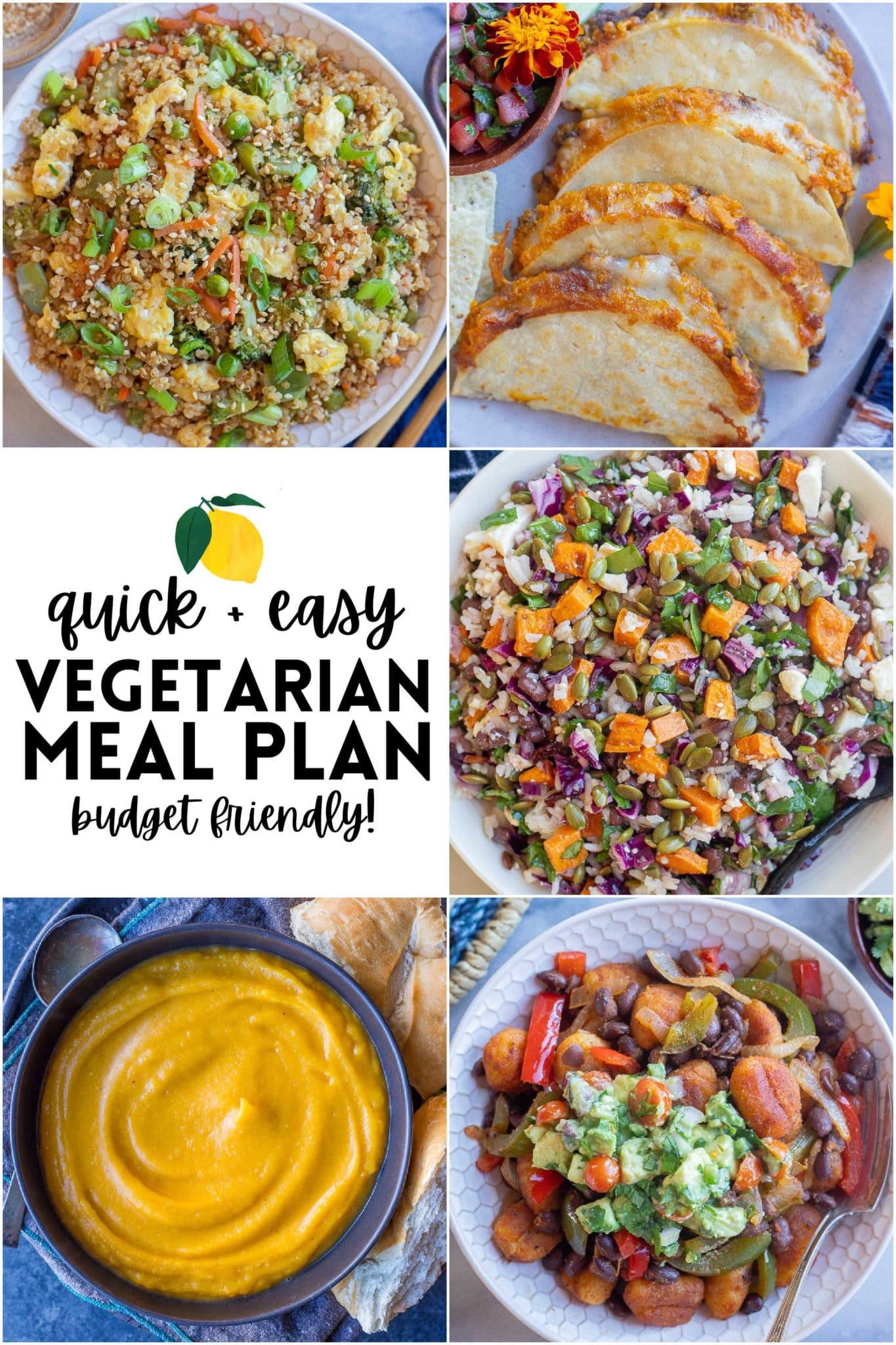In a world where culinary traditions and dietary preferences continually evolve, the art of crafting balanced vegetarian meal plans emerges as both a challenge and an opportunity. Imagine a palette of vibrant vegetables, hearty grains, and nourishing legumes, all harmoniously combined to create meals that are not only satisfying but also nutritionally complete. As more individuals embrace vegetarianism for health, environmental, or ethical reasons, the need for well-rounded meal planning becomes ever more essential. This article delves into the nuances of creating balanced vegetarian meals, offering insights and strategies to ensure that every plate is as nourishing as it is delightful. Whether you’re a seasoned vegetarian or someone exploring plant-based options, join us on a journey to discover how to balance taste, nutrition, and variety in every meal.
Crafting Nutrient-Dense Vegetarian Dishes
When designing vegetarian meal plans, it’s essential to ensure that each dish is both delicious and packed with nutrients. Embrace a variety of colorful vegetables to ensure a wide range of vitamins and minerals. For example, incorporate dark leafy greens like spinach and kale, which are rich in iron and calcium. Legumes and beans such as lentils, chickpeas, and black beans are not only great sources of protein but also provide dietary fiber that aids in digestion and keeps you full longer.
- Whole grains: Opt for quinoa, brown rice, or whole wheat pasta to add complex carbohydrates and fiber to your meals.
- Nuts and seeds: Almonds, chia seeds, and flaxseeds offer healthy fats and omega-3 fatty acids, essential for heart health.
- Fermented foods: Include foods like yogurt, kefir, or sauerkraut to promote gut health with beneficial probiotics.
Enhancing the flavors with herbs and spices not only elevates the taste but also adds health benefits. Turmeric, ginger, and garlic are known for their anti-inflammatory properties, while fresh herbs like basil and cilantro can boost antioxidant levels. Experimenting with different textures and flavors ensures that your meals are not only balanced but also exciting and satisfying.

The Art of Combining Proteins and Carbohydrates
In the realm of vegetarian cuisine, crafting meals that are both satisfying and nutritionally complete is an art form. At the heart of this culinary creativity lies the strategic pairing of proteins and carbohydrates. By thoughtfully combining these essential macronutrients, you can ensure a meal that not only pleases the palate but also provides sustained energy and essential nutrients.
Consider integrating these pairings into your meal plans:
- Quinoa and Black Beans: A powerhouse duo, quinoa offers a complete protein profile, while black beans add fiber and complex carbohydrates.
- Chickpeas and Brown Rice: The nutty flavor of brown rice complements the hearty texture of chickpeas, creating a balanced dish that is both filling and delicious.
- Lentils and Sweet Potatoes: This combination provides a rich tapestry of flavors, with lentils delivering protein and sweet potatoes offering a delightful source of carbohydrates.
By mastering these combinations, you can transform simple ingredients into vibrant, balanced meals that nourish both body and soul.

Exploring Seasonal Vegetables for Optimal Nutrition
Incorporating seasonal vegetables into your diet is a fantastic way to ensure you’re getting the freshest produce packed with nutrients. Seasonal vegetables are often more flavorful and nutrient-rich as they are harvested at their peak. They also tend to be more cost-effective and environmentally friendly. Here are some ways to include these vibrant ingredients in your vegetarian meal plans:
- Spring: Embrace the tender greens of asparagus, peas, and spinach. These can be lightly sautéed with garlic or tossed into fresh salads.
- Summer: Zucchini, tomatoes, and bell peppers are abundant. Grilled or roasted, they add a burst of color and flavor to your dishes.
- Fall: Delve into the earthiness of pumpkins, sweet potatoes, and Brussels sprouts. These can be roasted or pureed into hearty soups.
- Winter: Turn to root vegetables like carrots, parsnips, and beets. These are perfect for stews and roasted vegetable medleys.
By aligning your meals with the seasons, not only do you enjoy diverse flavors and textures, but you also support your body’s nutritional needs throughout the year. Experiment with different cooking methods to bring out the best in each vegetable, and let the seasons guide your culinary creativity.
Incorporating Healthy Fats for Flavor and Balance
Integrating healthy fats into your vegetarian meal plans can elevate both the taste and nutritional profile of your dishes. These essential fats not only add a rich and satisfying texture but also play a vital role in maintaining overall health. Consider adding these sources of healthy fats to your meals:
- Avocados: Creamy and versatile, they can be mashed into a spread, sliced onto salads, or blended into smoothies for a dose of heart-healthy monounsaturated fats.
- Nuts and Seeds: Almonds, walnuts, chia seeds, and flaxseeds are excellent for adding a crunchy texture and are rich in omega-3 fatty acids.
- Olive Oil: A staple in Mediterranean cuisine, it can be drizzled over roasted vegetables or used as a base for dressings, offering a robust flavor and antioxidants.
- Coconut Oil: Perfect for cooking at higher temperatures, it imparts a subtle sweetness and contains medium-chain triglycerides that provide a quick energy source.
By thoughtfully incorporating these ingredients, you can create meals that are not only balanced but also bursting with flavor, ensuring every bite is both nutritious and delightful.































